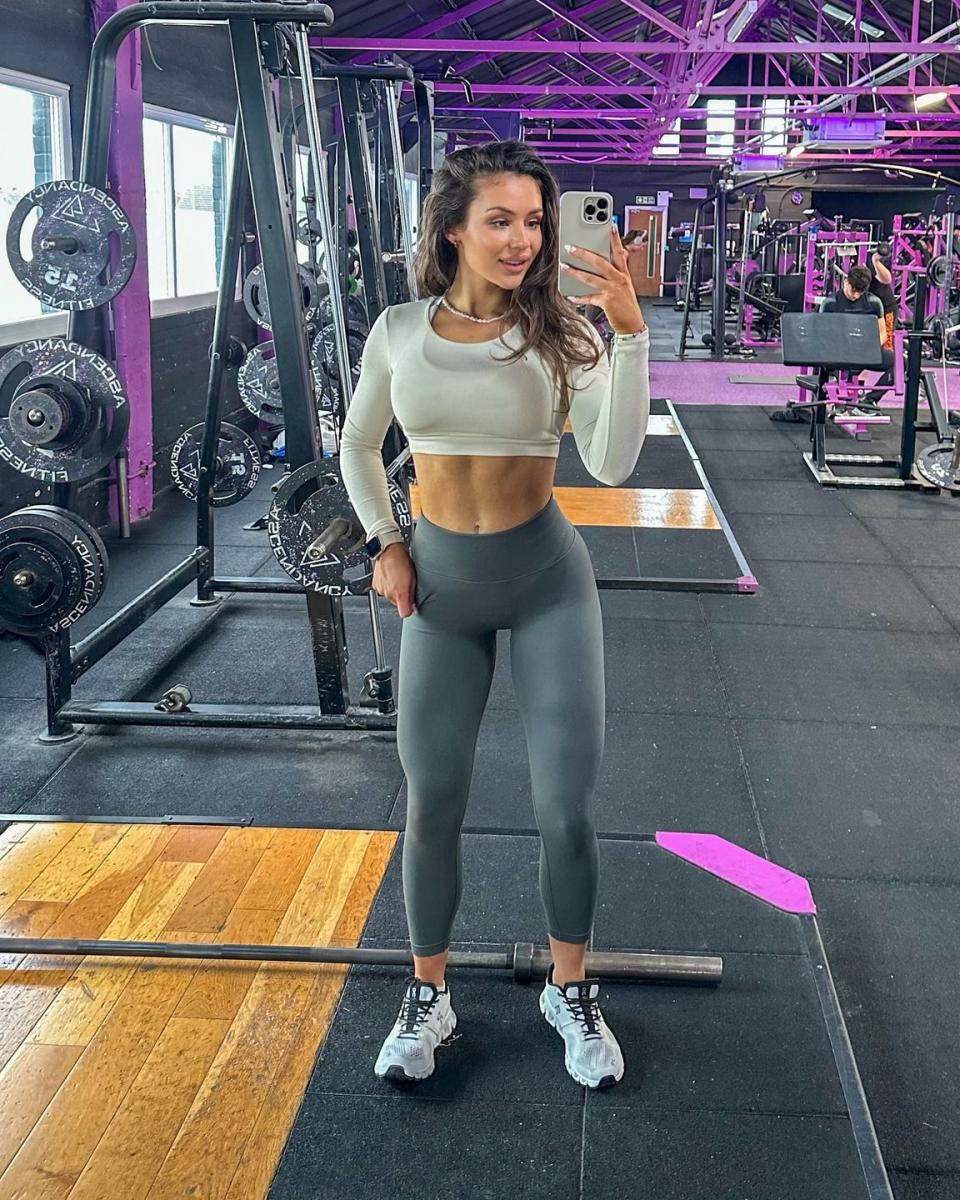'I switched weightlifting for hybrid training, here's what I've learned'

On paper, hybrid training could seem contradictory. The concept involves combining cardio (usually running) with strength training, and squeezing both into your routine surely means one or the other must let up – particularly if you have a strength or performance goal. It’s for this reason that athletes historically support a single-discipline training approach; if you’re hoping to win an Ironman, you probably won’t be smashing PBs in the weights section, after all.
But what about the average exerciser? Can you really have it all with hybrid training, or should you stick to either/or?
For influencer (and PT) Olivia Jarvis, hybrid training has made up her workout routine since November 2022, when she would perform two runs per week alongside four-five strength sessions. Now, an average week in her training looks like this:
Monday: 7km zone 2 run (at a conversational pace, keeping heart rate low)
Tuesday: Glutes and legs strength (I include a squat, hip thrust, and other lower-body movements)
Wednesday: Shoulders and triceps strength & 6km intervals (I always start with strength training first then intervals)
Thursday: Back, biceps and core strength
Friday: Leg strength, run-specific exercises and plyometric exercises (leg exercises specifically for running, along with plyometric hops and rehab work for a calf niggle)
Saturday: 8-15km run (at an easy conversational pace, great for building endurance and increasing mileage over time)
Sunday: Rest day, walk/active recovery
Since starting hybrid training 18 months ago, it took Jarvis a while to get to grips with her routine. Speaking on her YouTube channel, she says, ‘I’ve only found my flow with it in the last month, but I’ve finally got a nice, consistent routine that I’ve really started to enjoy.
‘Everyone seems to have started hybrid training, but if you feel like you’ve dipped your toe in and you’re not getting results or you feel confused, I’ve got you covered.’
Here, she shares five things she wants you to know about hybrid training, including how to get the most out of it, and how to structure and tailor your routine.
1.You’ll need more fuel than usual

During my marathon training block, I was doing two sessions a day: a 45-minute lift, then my 30-60-minute run. This is a big increase in overall expenditure, so I needed to be fuelling my workouts more.
A calorie surplus – or at least, maintenance – is best
If you’re doing longer endurance runs, you could be burning 1000 calories, and it’s super important is to make sure you’re eating those calories back, to be in a calorie surplus, or at least calorie maintenance.
If you’re doing that run and then you’re only sticking to your usual calories, you’re going to be under fuelled and end up losing weight and muscle mass which is not what you want – you won’t have energy and I don’t see this spoken about enough. This is particularly important if you’re wanting to gain lean muscle while increasing the weight you lift through progressive overload.
Any time I do a longer run or a double session (two workouts in a day), I make sure I’m in a calorie surplus that day. It’s quite enjoyable. I love the eating side of hybrid training.
Meal prep is key
What I will say is that eating enough while hybrid training can be quite time-consuming. This is something I found while training for a marathon, as well as lifting. At the start, I was spending a lot more time in the kitchen, so I decided to meal prep to make sure I could grab stuff in the fridge, rather than having to constantly cook.
Find the macro split that keeps you most energised (high protein isn’t always best)
You also want to make sure you’re getting enough protein while hybrid training – I’d recommend tracking your rough protein intake, even just in a journal or on your phone notes. If you’re familiar with myfitnesspal, use that for just one day to see your average daily protein intake.
If you’re trying to increase or maintain your muscle, make sure you’re on the high protein side. But I’d also recommend trying out different macro splits; protein is important, but trial whether high protein or high carb keeps you most balanced and energised when combining running with lifting.
2. Recovery is more important than ever

Random post-workout stretches aren’t enough
I only realised how important [recovery] was when I had an injury or a niggle which is too late, so trust me on this one – you need to do more than a couple of random stretches at the end of your sessions if you’re running and lifting regularly.
Foam rolling is great for tight muscles
Do more foam rolling – schedule in some time, even if you’re watching TV, have a foam roller under your sofa and spend time getting into your tighter muscle groups like your calves. When I do longer distance runs, my calves are tight in general and foam rolling is the best.
Try myofascial release therapy and mobility
Also look into myofascial releases, like using a golf ball to apply pressure to that area to release tightness. Also do mobility work. If you’re looking to get a deeper squat, work on hip mobility. With running, one thing I noticed was I didn’t do too much activation before heading out, which led to niggles in my hips.
Implement good sleep hygiene
Getting seven-eight hours sleep a night is also so important when hybrid training. I struggle to get eight, but seven is more achievable. I always dim the lights about half an hour before I fall asleep. I struggle sometimes, but dimming lights helps reset my circadian rhythm. The other thing is, when my running distances increase and when I’m eating more, I started eating too close to bed and from that, I noticed I’d wake up a lot at night, so I now eat one-two hours before going to sleep, which helps with a deeper sleep state.
3. Tailor your workout splits to your goals

Everyone has different primary goals when hybrid training, but we also have different lifestyles. You could be comparing your hybrid split to someone on Instagram whose job is around content creation and fitness, whereas you’re working 9am-5pm and you wouldn’t be able to train in the middle of the day for two hours – doing half running, half lifting – like them.
Look at your lifestyle, what goals you have and where you could find time to work towards them. When I was doing marathon training but also lifting, running was my primary goal so for those ten weeks, running was my priority.
I would choose running over lifting, and when I was tapering, I would maintain my lifts and would avoid training to failure because running was my goal. But, if I was training for HYROX, running would come second.
It’s not necessary to do both types of training on one day
I find it long to train separately twice a day, so I like to get up early in the morning to do my lifting, then finish my run straight after so it’s done for the day. My partner would rather train in the morning and then again in the evening and that works for him.
If it’s not realistic to do double days, just do three lifts per week and three runs per week. That’s a six-day split so you don’t have to double up.
Decide what you’re focussing on. With weights, is it hypertrophy? Are you doing more sets and reps? Or are you doing strength with fewer reps? If running is your focus, is endurance your total focus, alongside running-specific strength workouts?
4. Optimise the exercises you do to your goals

I came from bodybuilding, so my goal previously was to build strong glutes and a strong back, but I didn’t have performance goals. I had weight goals but not performance, like performing a quicker run or competing in a HYROX.
With the way I used to structure my leg workouts, I wouldn’t train calves or mobility in my ankles which I should have done. But this is something a lot of people overlook when you are training to grow stronger glutes.
Whereas now, I train to prevent injury, improve mobility in my ankles, and build stronger calves. I learnt the hard way with injuries in my calves as my ankles and dorsiflexion were weak. Plyometric exercises are amazing for improving speed and push off power when running. When you run, the amount of work that goes through your calves is amazing.
5. Schedule your workout routine in
Rather than going in blind and thinking, ‘Oh, I’m going to train today,’ if you have a goal like a 5k race, a HYROX, a 10k, a half marathon or a full marathon, it’s important to schedule your workouts so that you know what you have coming up and you can progress and plan ahead of time.
Fit your workouts in around you
If you have a long run one weekend, you can factor that into any socials you have planned. Your workouts should be programmed so that you are on track to achieve your goal. You can also make sure you have the time to do the workouts you aim for and aren’t going to run yourself into the ground. It’s about understanding what you enjoy and what you can make time for – you don’t want your training to take over your life.
You Might Also Like


